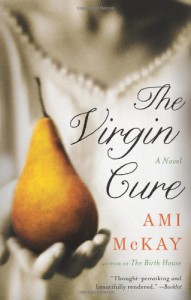Currently reading
Jennifer, Gwyneth & Me: The Pursuit of Happiness, One Celebrity at a Time
Mr. Mercedes
Arduino Projects Book
The Virgin Cure
 Moth is a young girl living in the slums of lower Manhattan until her own mother sells her as a servant. When she tries to escape and finds her mother gone, few options are left to her. Moth is forced choose between returning to the abusive woman who bought her; returning to her old life; or living a life of comparative luxury as a prostitute. With the help of a caring, female doctor named Dr. Sadie, Moth must decide what is most important to her and what she’s willing to sacrifice to survive.
Moth is a young girl living in the slums of lower Manhattan until her own mother sells her as a servant. When she tries to escape and finds her mother gone, few options are left to her. Moth is forced choose between returning to the abusive woman who bought her; returning to her old life; or living a life of comparative luxury as a prostitute. With the help of a caring, female doctor named Dr. Sadie, Moth must decide what is most important to her and what she’s willing to sacrifice to survive.Shortly after finishing The Virgin Cure, I read The Civil War in 50 Objects and I was struck immediately by what an amazing job Ami McKay did capturing the feel of the era. Everything from exciting new inventions to diseases people worried about to forms of entertainment was captured beautifully. The inserts between chapters in the form of diary entries and newspaper clipping added to the feeling that this story really could have happened. I had more ambivalent feelings about the in-chapter commentary by Dr. Sadie. Many of these comments included irrelevant details about things like lovebird mating habits or boring things like overly detailed descriptions of real dresses like those Moth was wearing.
More important than the content of these asides was what they did to the feel of the story. They made this a story that you weren’t living with the character or as the character, but a story you were watching as an outside observer. For most of the story, I didn’t really feel Moth’s desperate desire to be more than a poor person or to have a safe place to stay. As a result, some of her choices seemed ill-considered and incomprehensible. A story this well written and this well researched should be a shoe-in for a four or five star review, but the lack of connection robbed it of the spark it needed to be truly great.
This review first published on Doing Dewey.






